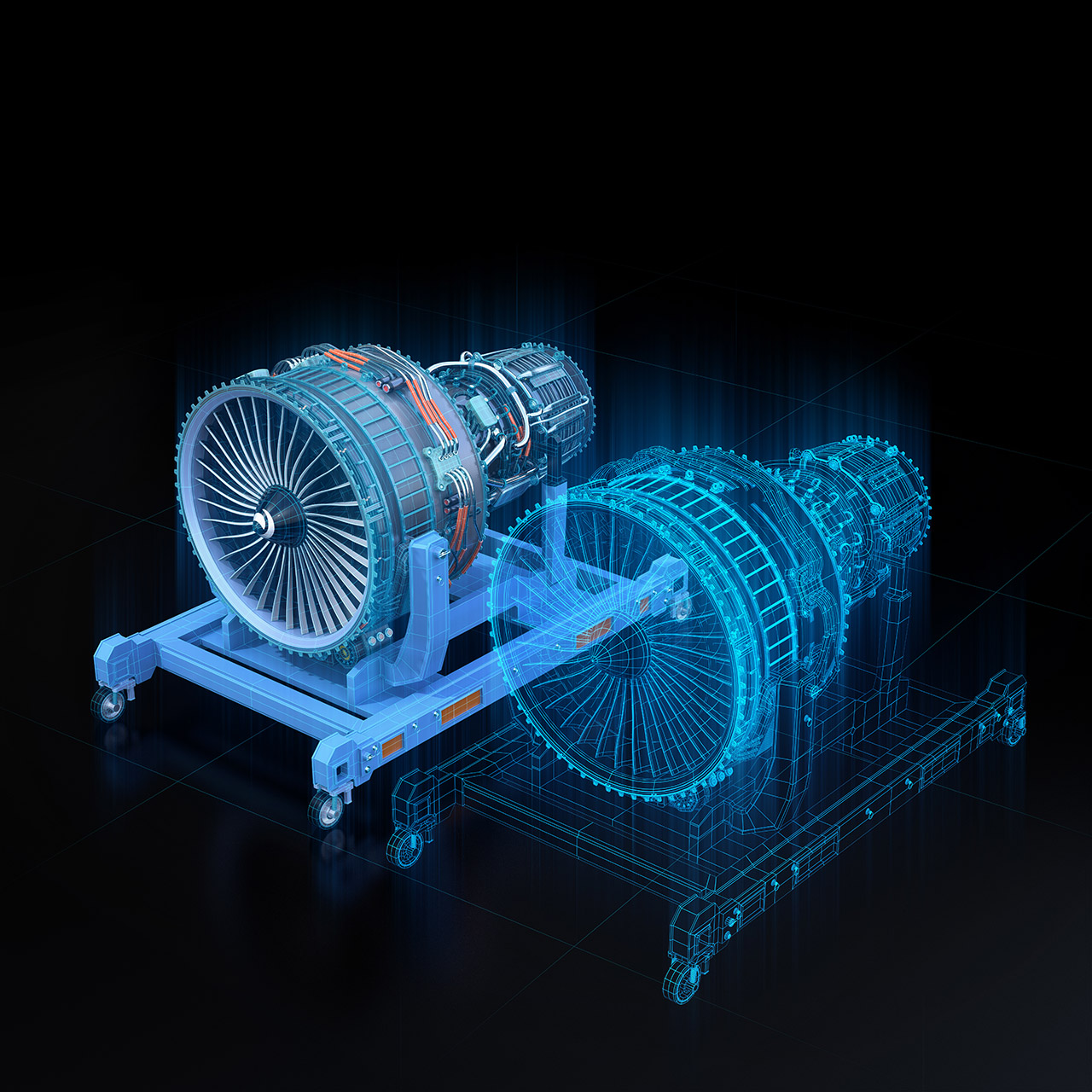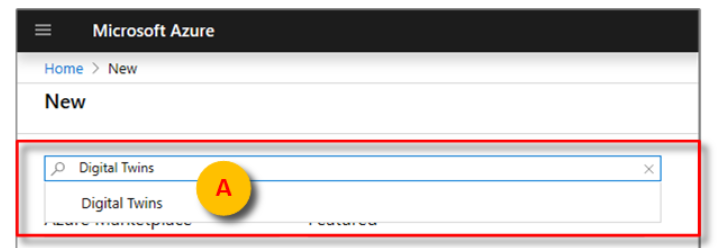This website uses cookies so that we can provide you with the best user experience possible. Cookie information is stored in your browser and performs functions such as recognising you when you return to our website and helping our team to understand which sections of the website you find most interesting and useful.
Digital Twins in Manufacturing

The Gartner Group on Digital Twins
The Gartner Group reported on February 20, 2019, that digital twins were entering mainstream use. Seventy-five percent of companies utilizing the internet of things (IoT) were also implementing or planning on implementing at least one digital twin in their organization.
What is a digital twin?
Digital twins are a software replica of the physical original. They are constantly evolving towards a more perfect prototype of the physical instance. Oceans of data coming from the real world cause the digital twin to approach the physical original in all operational aspects.
Instead of calling it “a computer model of the equipment,” the term “digital twin” has come into vogue because the model has become so close to perfection that a new term was necessary. We are able to create a digital copy of the physical equipment that emulates all the same behaviors and mirrors every aspect of the original down to the laws of nature that guide the equipment (mostly wear and tear in dependency of operation conditions), and thus, justifies calling the model a “twin.”
But it is digital, so it can be subject to deep data research and pattern recognition that can never be done with the physical instance. Another good definition of a digital twin is a high-fidelity virtual prototype, which hints at the great potential the digital twin has for the design process.
The flight simulator goes digital
In concept, the digital twin is nothing new. We have had “physical twins” in the form of flight simulators for decades as physical copies of the actual hardware. The Aerospace industry, because of the high complexity of their designs and the high risk of actual testing the real thing, had detected the need for simulators a long time ago. The digital twin concept goes far beyond the flight simulator because we now have unlimited possibilities to simulate the real world. But the intent behind flight simulators and digital twins is identical: provide a high-fidelity copy of the original physical thing.
What new things are possible with digital twins?
Product development becomes unified.
Complex hardware has seen a big increase in software components that provide new features. For example, the Chevrolet Volt contains 2 million lines of software code. In the traditional world, hardware and software design are on separate cycles of development. The hardware design typically goes through long cycles, while software goes through much shorter cycles. This is a problem. The digital twin makes it possible to have hardware and software development on the same “cadence”. Hardware design becomes like software design, constant simulations, and continuous improvement, because of instant feedback.
Simulation/prototyping of the actual product is possible at an earlier stage.
Simulation with the hardware aspects of equipment also gives more design flexibility as things can be simulated before too much time is spent in the design. There is no need for time-consuming physical prototyping. With a digital twin, trial and error is now a valid approach, while it is considered a bad practice in the traditional hardware design process.
Quality control moves to the center of product development.
Quality testing of the finished product can be done much earlier as we don’t have to wait for an actual physical prototype to be built.
And more…
- Diagnostic of maintenance problems of equipment in the field, turning corrective maintenance into predictive maintenance, with big potential for cost reduction.
- Feature updates in the field, always a tricky proposition, can be tested with the digital twin, reducing the risk of problems in the “roll out.”
The digital twin is major milestone in the gradual development we have seen in the last decade, where hardware starts to behave more and more like software.
Digital twin of a process
A digital twin is not just a digital version of one piece of physical equipment or device. An entire manufacturing process can be represented as a digital twin. Some call this twin2twin or connected digital twins. In high tech manufacturing and process manufacturing, this provides great advantages. New product features can be tried out much more easily, including the actual production process of these features.
For the discrete industry, a very valuable possibility that is now suddenly available is a better approach to the issue of engineering revisions. The traditional process is not ideal. Even with integrated PLM and ERP, nowadays quite common, manufacturing operations may be informed ahead of time of upcoming revisions, but the actual response (the implementation of the Engineering change order) is still a manual process. With a digital twin of the manufacturing process, the engineering change can be simulated right at the start, giving important clues for the disposition decision that has to be made when the Engineering Change Order is actually released.
More extensive reorganizations of the manufacturing process can be simulated, with consequences for output, scrap %, and other parameters. In this area, it becomes even more true that trial and error is encouraged. Possibilities we would not have thought of in our process design, are now coming to the surface.
Companies offering digital twin service
As expected, the major PLM software companies are the first in providing digital twin initiatives resulting in actual services. Not surprisingly, these are the same companies that ventured into IoT a few years ago. Here are a few companies that have dedicated websites and case studies for the topic of Digital Twins:
Microsoft Azure Digital Twins
Microsoft has had a digital twin service in customer review since October 15, 2019. Here is how Microsoft presents this service:
Azure Digital Twins is an IoT service that helps you create comprehensive models of physical environments. Create spatial intelligence graphs to model the relationships and interactions between people, places, and devices. Query data from a physical space rather than disparate sensors. And, build reusable, highly scalable, spatially aware experiences that link streaming data across the physical and digital world.

The test instance a customer can setup is about physical rooms with air quality and temperature parameters. Because of the great interest, it is not possible to participate in this simulation right now. We will report our findings in a later article.
Which industries can benefit from digital twins?
- The process industry would use it for process design of the entire process.
- The discrete industry would use it for unified design and testing of equipment.
- The extraction industry would use it for process design. In this industry, prototypes are hard because of the huge size of equipment. The digital twin is the perfect solution.
- The commercial real estate construction industry would use it for the unified design and testing of smart buildings.
- The retail industry would use it for customer volume, product replenishment simulations, and other aspects of retail process design.
- Utilities very much benefit from digital twins to simulate network loads using different forms of energy, peak events, etc.
- Health care would use digital twins of the human body to test new medications or surgeries.
- (This one was a surprise to me) Cybersecurity to protect physical assets from computer virus attacks will benefit from digital twin technology (GE Global Research labs: Digital Ghost project)
IIoT is key
The industrial internet of things (IIOT) is the key enabler of digital twin technology. The digital twin’s fidelity depends on the continued digestion of industrial data provided by sensors over time. This will create a digital twin that can barely be distinguished from the real thing in all its aspects of behavior. (Some call it the Turing test for digital twin.)
Conclusion
Manufacturing industries benefit in fundamental ways from the further technological possibilities of virtual reality, with digital twin as an example. The impact on the product (discrete industry) and process (process industry) is substantial, leading to much shortened design lead times. For the discrete industry, the service business has already demonstrated great cost savings and increased up-times using this technology for preventive maintenance. A broader adoption of this technology seems guaranteed.
This publication contains general information only and Sikich is not, by means of this publication, rendering accounting, business, financial, investment, legal, tax, or any other professional advice or services. This publication is not a substitute for such professional advice or services, nor should you use it as a basis for any decision, action or omission that may affect you or your business. Before making any decision, taking any action or omitting an action that may affect you or your business, you should consult a qualified professional advisor. In addition, this publication may contain certain content generated by an artificial intelligence (AI) language model. You acknowledge that Sikich shall not be responsible for any loss sustained by you or any person who relies on this publication.




